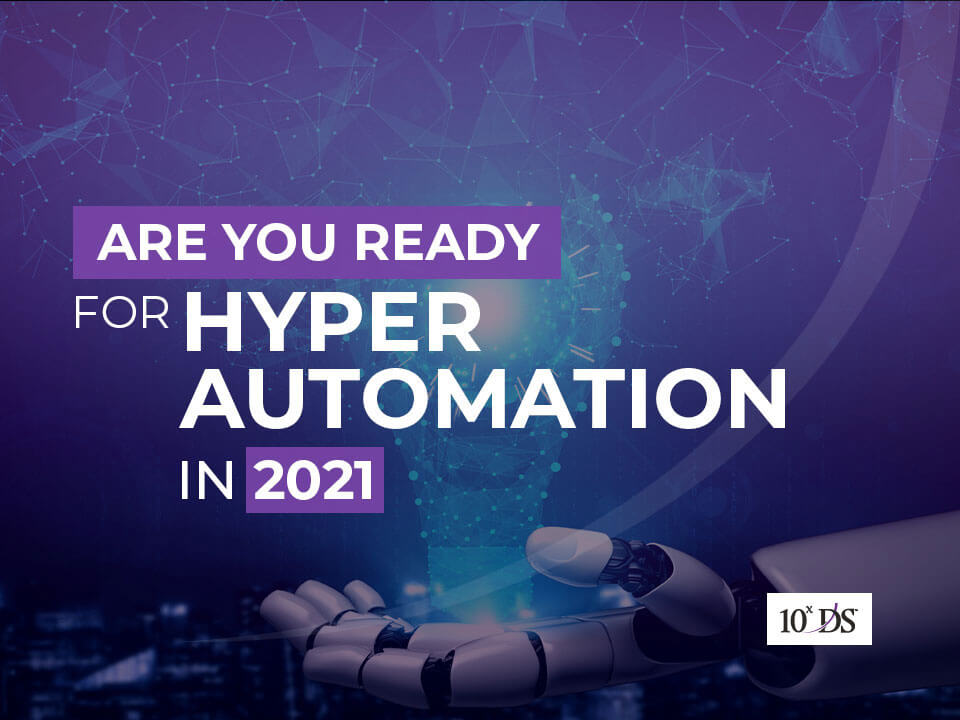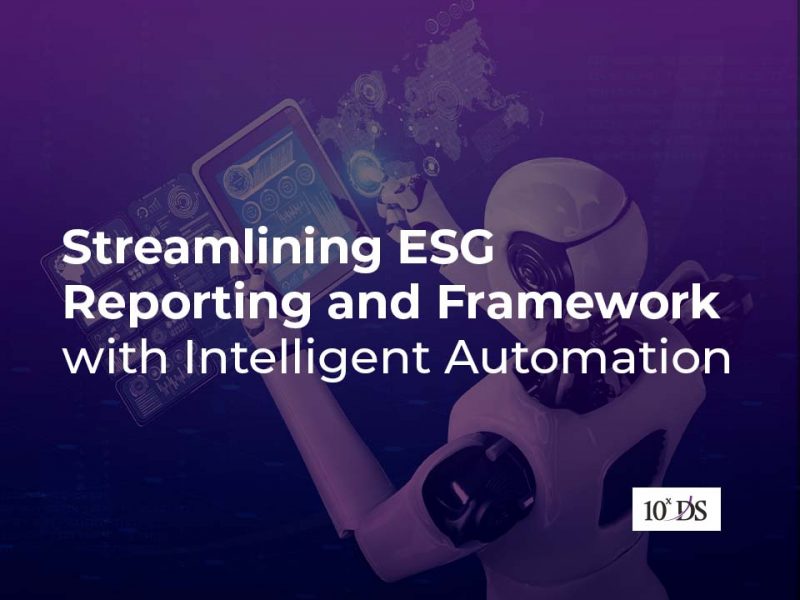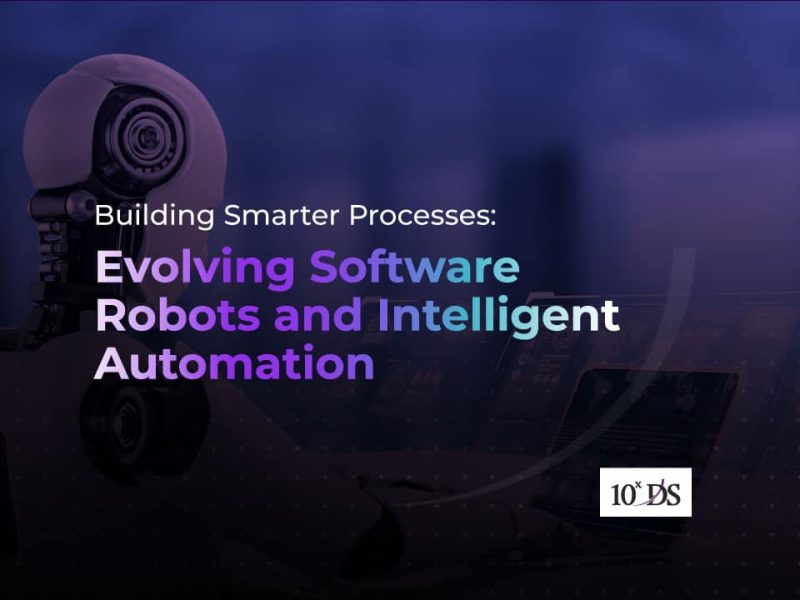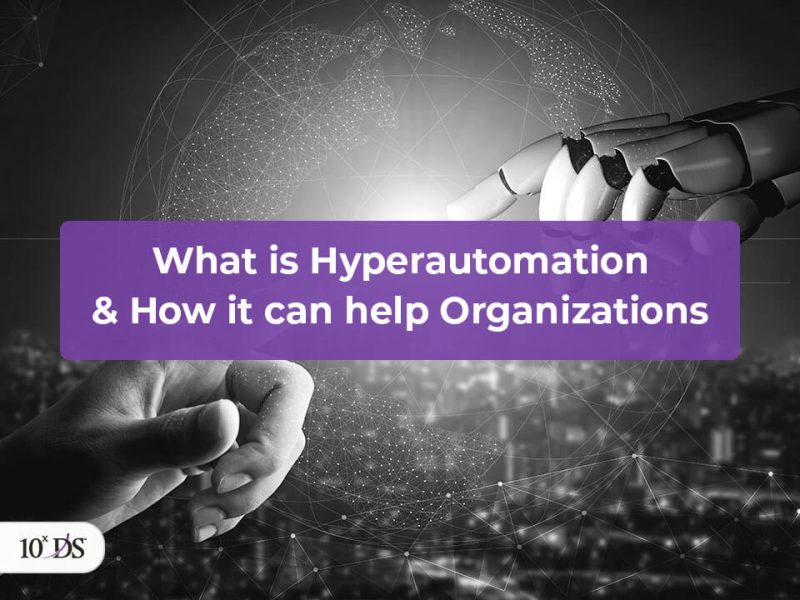
Are You Ready for Hyperautomation in 2021
Hyperautomation is one of the most talked-about technologies these days and it is likely to be a trending buzzword in 2021. Research and advisory firm, Gartner listed hyperautomation on top of its Top 10 Strategic Technology Trends for 2020 report, and for good reasons. Hyperautomation, at its core, combines several components of automation tools and technologies to enhance the ability to automate work, and that will be a key factor in driving success for businesses in 2021 and beyond.
“Hyperautomation deals with the application of advanced technologies, including Artificial Intelligence (AI) and Machine Learning (ML), to increasingly automate processes and augment humans,” the Gartner report says. “Hyperautomation extends across a range of tools that can be automated, but also refers to the sophistication of the automation (i.e., discover, analyze, design, automate, measure, monitor, [and] reassess).” In a nutshell, hyperautomation expands the capabilities of Robotic Process Automation (RPA) with AI, analytics, process mining, and other advanced technologies.
Are You Ready for Hyperautomation in 2021
The main objective of hyperautomation is to automate most of the day-to-day processes of a business to facilitate superior employee engagement, improved efficiency, and a higher return on investment. In that, it forms a vital component of the digital transformation of modern-day businesses while freeing resources and capital for the company that can be used in other areas eventually leading to better cost-savings.
As there is no single automation tool, that can perform all the tasks of humans, hyperautomation aims to combine different emerging technologies to make that possible. With the help of AI-powered decision-making functions, hyperautomation can allow businesses to visualize their operational efficiencies, monitor key performance indicators, and see how their processes interact to drive value. This, in turn, can lead to business process innovation and opening up significant opportunities.
Here are three main technologies that are integral to hyperautomation and will be determinant in how this emerging technology can add more value to your business in the next decade.
Robotic Process Automation (RPA)
RPA is one of the prime technologies today that is transforming the way enterprises manage their everyday business tasks to drive higher cost-reduction and value addition. Reports indicate that RPA investments are burgeoning rapidly and more and more organizations are adopting automation to enhance their business results. At the same time, RPA is also helping businesses to move forward with their digital transformation goals and serve clients more satisfactorily.
It can be said that hyperautomation is primarily based on the concept of RPA, but it takes the methodology to a whole new level by integrating various other technologies in the mix. This way, hyperautomation focuses on the application of RPA bots to automate rule-based business processes while enhancing its capabilities to do a lot more.
Artificial Intelligence (AI)
AI has become a vital tool to digitalize businesses and stay competitive in the market. While RPA automates the basic repetitive tasks in an organization, AI helps to make more agile and strategic decisions to handle the complex and less standardized business processes. Hyperautomation combines AI and RPA to develop a powerful and intelligent approach to facilitate the convenience of automation by reducing manual effort.
Hyperautomation also taps into the insights, analytics, and processing power of AI to create various use cases that would not have opened up by using RPA solutions alone. For instance, banking institutions can detect fraud more capably by using AI-powered systems and handle data discrepancies more effectively than humans can. Automating the entire process allows banks and financial companies to perform the task at a greater speed and accuracy so that they can stay on top of financial security.
Machine Learning (ML)
According to Expert.ai, Machine learning refers to “an application of Artificial Intelligence (AI) that provides systems the ability to automatically learn and improve from experience without being explicitly programmed.” This means that ML can further augment AI solutions to identify and assess data patterns autonomously while learning to develop the system itself. Hyperautomation works to make the most of this methodology while also integrating RPA bots and other automation solutions to it.
Enhancing AI systems with ML tools allows the software solutions to make real-time decisions depending upon the processed datasets. Working on huge amounts of data to figure out the right course of action in real-time is impossible manually. So automating the process allows the system to make quick decisions and perform the actions faster to improve the efficacy and accuracy of the system while reducing lead-time.
Conclusion
As hyperautomation blends advanced technologies for improving their efficiency, it works to benefit organizations in ways that are not possible with the use of any single solution. Besides, it also helps to reduce the hassle of investing in multiple systems by bringing in everything you need to a single dashboard.
Talk to our experts to learn more about hyperautomation and see how you can implement it to maximize business efficiency and ROI.


